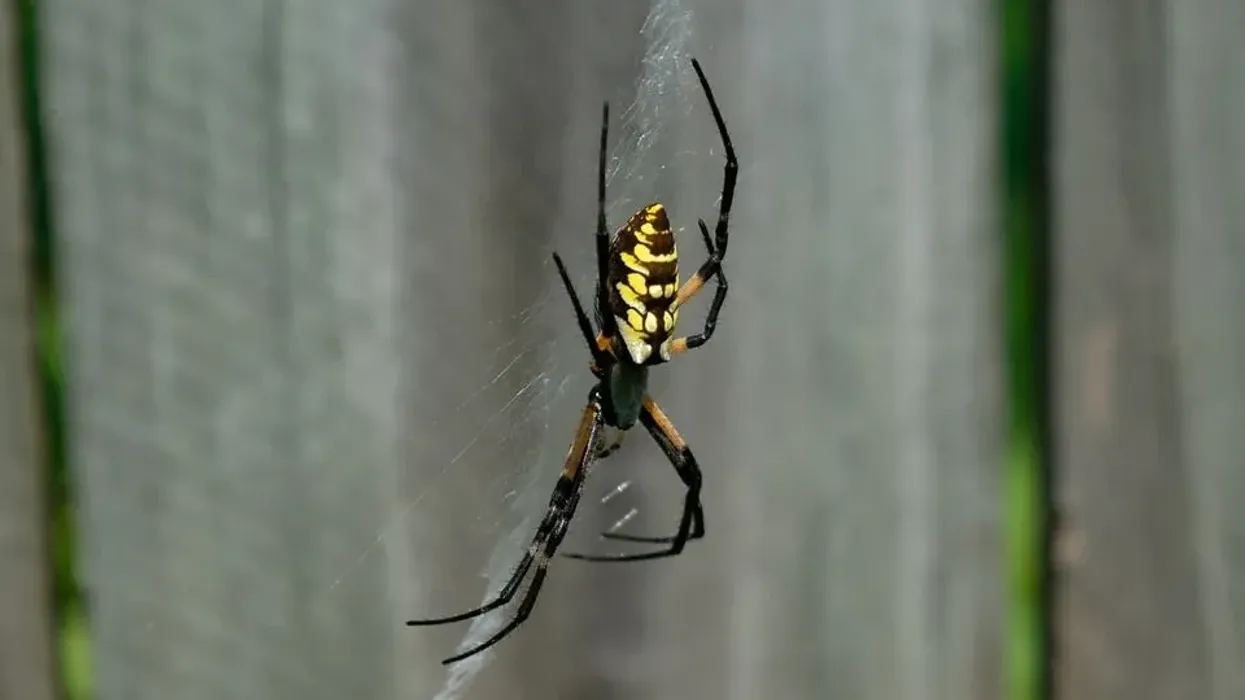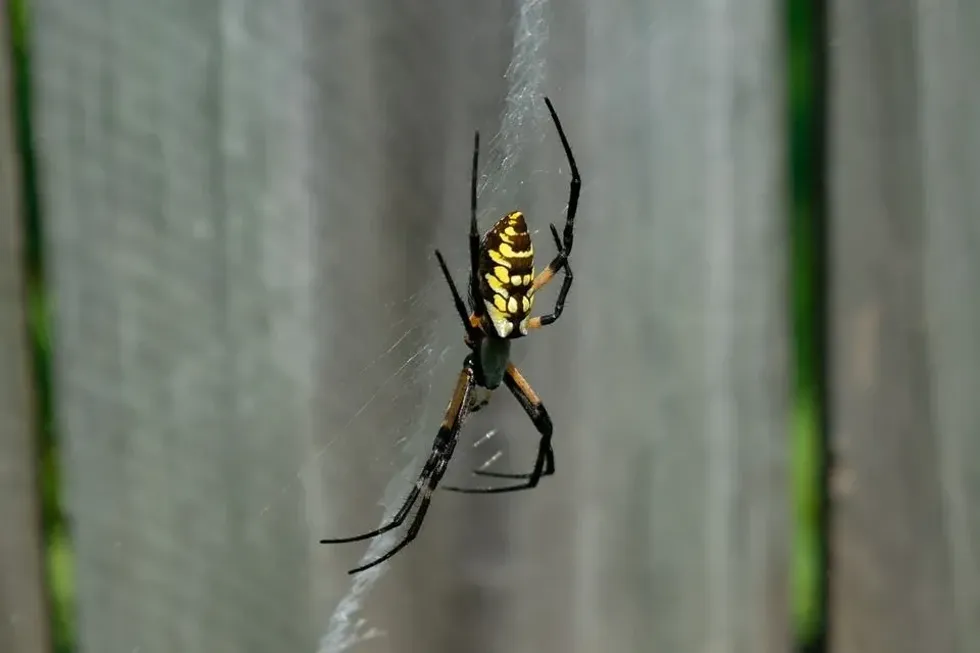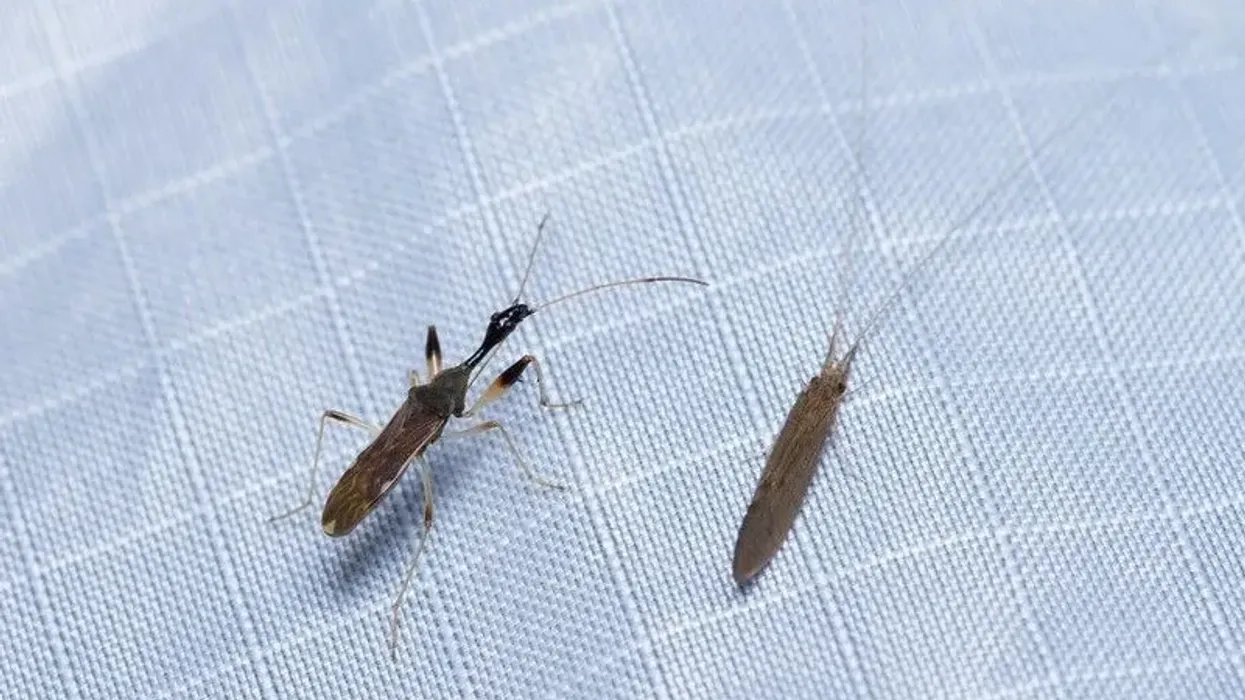Is your child curious about most of the insects that they see in the garden? If yes, make sure they can spot the unique black and yellow garden spider the next time they hang out in the garden!
The black and yellow garden spider, the writing spider, or the yellow garden spider (Argiope aurantia) is a large, orb-weaving arachnid found across a wide range of habitats and most commonly in backyards and gardens with an abundance of plants.
Found in several regions of Mexico, the United States, and Central America, the black and yellow garden spiders, are unique because they can spin a characteristic zigzag patterned, circular silk web.
Garden spiders belong to the group of 'orb weavers,' meaning those that spin wheel-shaped circular webs, since 'orb' in English means 'circular.'
The scientific name of the black and yellow garden spider (Argiope aurantia) translates to 'gilded silver face' in Latin, coming from the small silvery hairs on its head and body and the typical yellow and black patterns on its abdomen.
A fairly common sight in gardens throughout North America, the black and yellow garden spiders are indeed an interesting species of orb weaver.
Keep reading for more interesting facts about the black and yellow garden spider.
If you like reading about black and yellow garden spiders, you can check out more such fun facts on animals like the darkling beetle and the puss moth.
Garden Spider Interesting Facts
What type of animal is a Garden Spider?
As evident from the name, a black and yellow garden spider is a species of spider.
What class of animal does a Garden Spider belong to?
The black and yellow garden spider belongs to the class Arachnida; that is, it is an arachnid of phylum Arthropoda.
How many Garden Spiders are there in the world?
There is no data available regarding the total number of black and yellow garden spiders in the world.
Where does a Garden Spider live?
Black and yellow garden spiders are terrestrial and found across a wide range of habitats in temperate and tropical areas. Their terrestrial biomes may include grasslands, savannahs, forests, scrub forests, swamps, and marshes. You can also spot the black and yellow garden spider in agricultural and suburban areas.
What is a Garden Spider's habitat?
Black and yellow garden spiders inhabit areas with an abundance of tall plants, shrubs, and flowers, and preferably where it is sunny. They spin webs in shielded areas that will protect them from the wind.
Since their habitat also includes gardens and backyards in suburban areas, finding a garden spider web in the eaves of buildings and houses is not out of the ordinary.
The geographical range of these black and yellow garden spiders extends from Canada to as far as Costa Rica, covering large swathes of the United States, Central America, and Mexico. They are, however, not a common sight in the Canadian Great Basin and the Rocky Mountains.
The webs of the black and yellow garden spiders are quite peculiar; they are circular in shape, composed of a complicated zigzag pattern of silk, and can reach diameters of up to 2 ft (60 cm).
Since the web is circular (or orb-shaped), it consists of several radial threads of fine silk converging at a central point, making it appear like a wheel.
The spider usually occupies the center of the web, facing down. A female black and yellow garden spider will usually build a larger web compared to its male counterpart.
When threatened by a potential predator, the garden spider will simply get off the web and stow away in the nearby ground. The black and yellow garden spiders are known to build and live in clean and orderly webs compared to the golden orb-web spiders that build a disordered series of webs.
Who do Garden Spiders live with?
Most species of spiders are solitary creatures and spend most of their adulthood alone; the black and yellow garden spider is no exception. However, the male spiders of the species do leave their webs and go in search of a mating partner and are known to build their own web near, or within, the female's web itself.
How long does a Garden Spider live?
The lifespan of the black and yellow garden spider is approximately a year in temperate climates. They hatch in the fall and barely make it to the first hard frost of the following year.
The male spiders are known to die soon after mating in their first year. However, black and yellow garden spiders in captivity and those in warmer climates may live for more than a year.
How do they reproduce?
On reaching maturity, the male black and yellow garden spider leaves its web and wanders in search of a female mating partner. When the male finds a partner, it either waits around the periphery of the female's web or builds a web of its own, either within or near the female's web.
Courtship rituals may involve the male spider plucking the strands of the web of the female.
The copulatory organs of the males include a pair of palpal bulbs on its second pair of legs that it uses to transfer the sperm to the female. The males often die after this mating exercise or may be eaten up by the female.
An interesting aspect of the reproduction of these black and yellow garden spiders is that the females build distinctive egg sacs to protect the eggs until they hatch. The egg sac is basically a ball made up of layers of silky sheets with an outermost protective sheet that is brownish in color.
Inside each such egg sac, there are over a thousand eggs that the female lays; one spider may produce around one to four egg sacs.
The egg sacs may have a diameter ranging between half an inch to an inch (1.58 cm to 2.54 cm), and the female may hang it in the center of her web. The females guard the egg cases for as long as they are alive but dies as soon as the bitter frost arrives.
Although the eggs hatch in autumn or late summer, the young spiders come out of the egg sac in spring. A hatchling grossly resembles an adult and develops reproductive organs as they grow.
What is their conservation status?
The International Union for Conservation of Nature (IUCN) Red List does not accord any special conservation status to the black and yellow garden spiders. Hence, their population is believed to be widespread and stable.
Garden Spider Fun Facts
What do Garden Spiders look like?

Like most other arthropods, the body of a black and yellow garden spider has three main parts -the cephalothorax, abdomen, and legs. Whether it is a male or a female, the abdomen of these spiders has a characteristic pattern of orange or yellow markings against a black background.
Their legs are usually black with red, orange, or yellowish bands on them. The front part of the body (cephalothorax) is covered with short and silvery hair.
Like several other orb-weaver spider species, these black and yellow garden spiders have three claws on each foot, helping them efficiently tackle the delicate silky threads while spinning. The males have a pair of palpal bulbs (copulatory organs) on their pedipalps (second pair of legs). The females grow to significantly larger sizes compared to the males of the species.
How cute are they?
Well, the garden spider is not really 'cute'. However, it does have a striking appearance due to the characteristic yellow markings on its black body.
How do they communicate?
The yellow garden spider does not have a remarkable vision. But to make up for the poor eyesight, these spiders have an amazing ability to respond to tactile (sense of touch) and chemical stimuli.
They are particularly sensitive to air currents and vibrations. In fact, the males communicate with the females by plucking the web of the latter; this conveys vibrations to the females, much like what happens in stringed instruments like a guitar.
How big is a Garden Spider?
The females of the species are larger than the males. Females can reach a size of around 0.75 in to 1.10 in (19 to 28 mm), and the males are smaller, reaching a size of around 0.20 in to 0.35 in (5 mm to 9 mm). A female garden spider may be as big as a ladybug.
How fast can Garden Spiders move?
No data is available regarding how fast these spiders move. But they do dart about pretty quickly like any other spider species.
How much does a Garden Spider weigh?
Most orb-weaving spiders, including the black and yellow garden spider, have a body mass of approximately 0.0017 oz to 0.0028 oz (50 mg to 80 mg).
What are their male and female names of the species?
Male and female garden spiders do not have any distinct names.
What would you call a baby Garden Spider?
A baby garden spider may be called a 'hatchling' or 'spiderling.'
What do they eat?
The black and yellow garden spiders are carnivorous and feed on several flying insects such as grasshoppers, flies, and aphids, bees, wasps, and even small vertebrates such as green anoles and geckos.
Are they harmful?
The black and yellow garden spiders are not aggressive and will not attack humans unless provoked. Their venom is not at all harmful or poisonous, and its bite may feel like that of a bee sting with minor swelling and pain.
Would they make a good pet?
Given that the yellow garden spiders are not harmful, keeping them as a pet may be a good idea. However, it will be a challenge to help it survive inside a terrarium or any enclosed space since the spider may not be able to spin a web inside the enclosure.
Did you know...
The extraordinary zigzag pattern at the center of a garden spider's web is called stabilimentum, and hence, another name for these arachnids is writing spider.
Besides being known as a writing spider, corn spider, McKinley spider, and zipper spider are some other names for these arachnids.
Like the yellow garden spiders, the banded garden spider (Argiope trifasciata) is another type of orb-weaving spiders.
How do their webs work?
The silky web of the yellow garden spiders has a central spiral portion that it consumes every night and then respins it the next morning with fresh, silky strands. The reason behind the spider consuming part of the web is that the strands may contain organic matter like tiny insects that provide nutrition to the spiders.
The radial strands remain intact. The spider may also recycle the chemicals that they use to spin the web.
How to get rid of Garden Spiders?
Since garden spiders are categorically harmless, there is no particular need to kill them right away. However, if they prove to be a nuisance, any common insecticide or natural repellants such as garlic, lemon, clove, rosemary, cinnamon, or cedar oil may help get rid of the spiders.
Here at Kidadl, we have carefully created lots of interesting family-friendly animal facts for everyone to discover! Learn more about some other arthropods, including the cicada killer wasp or the click beetle.
You can even occupy yourself at home by drawing one of our Garden spider coloring pages.










